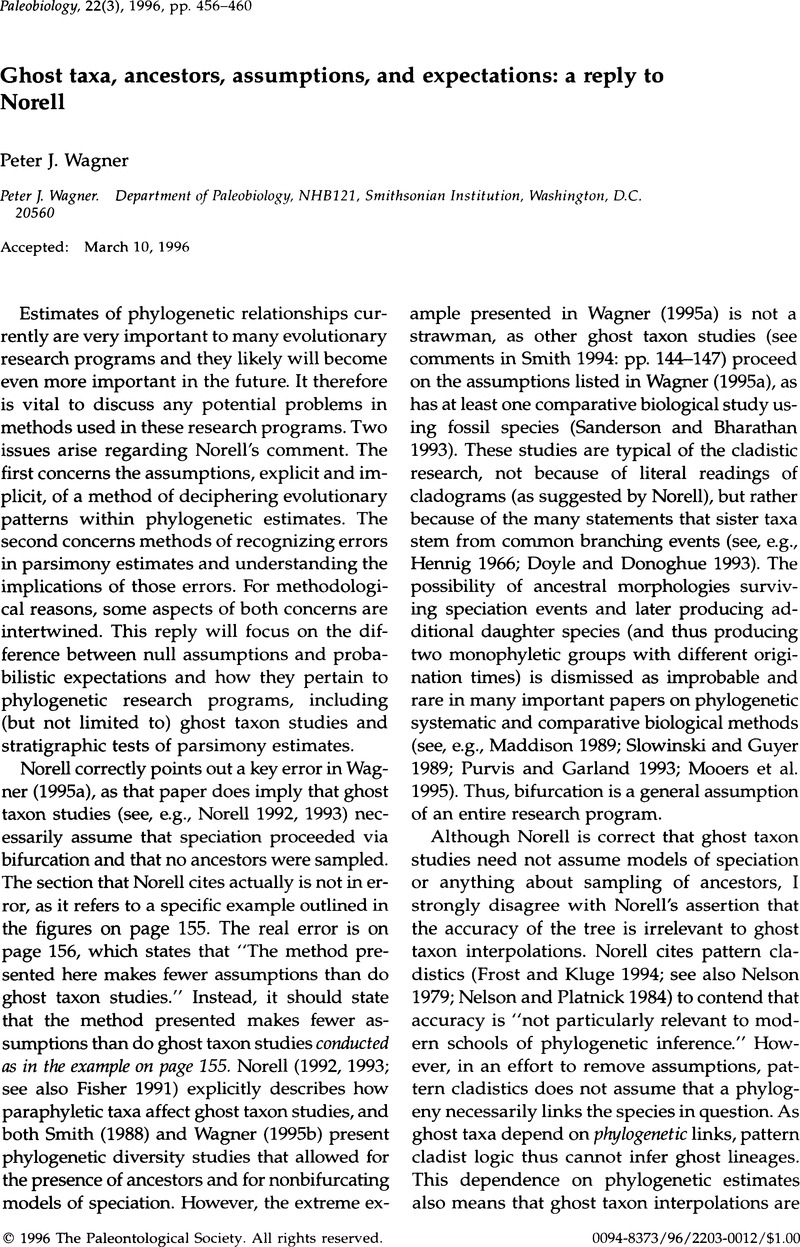Crossref Citations
This article has been cited by the following publications. This list is generated based on data provided by Crossref.
Clyde, William C.
and
Fisher, Daniel C.
1997.
Comparing the fit of stratigraphic and morphologic data in phylogenetic analysis.
Paleobiology,
Vol. 23,
Issue. 1,
p.
1.
O'Keefe, F. Robin
and
Sander, P. Martin
1999.
Paleontological paradigms and inferences of phylogenetic pattern: a case study.
Paleobiology,
Vol. 25,
Issue. 4,
p.
518.
Jablonski, David
2000.
Micro- and macroevolution: scale and hierarchy in evolutionary biology and paleobiology.
Paleobiology,
Vol. 26,
Issue. sp4,
p.
15.
Hanger, Rex Alan
and
Strong, Ellen E.
2000.
Phylogeny of the Anopliidae (Brachiopoda: Chonetidina).
Historical Biology,
Vol. 14,
Issue. 4,
p.
285.
Jablonski, David
2000.
Micro- and macroevolution: Scale and hierarchy in evolutionary biology and paleobiology.
Paleobiology,
Vol. 26,
Issue. S4,
p.
15.
Adrain, Jonathan M.
and
Westrop, Stephen R.
2001.
Fossils, Phylogeny, and Form.
Vol. 19,
Issue. ,
p.
291.
Miller, Ellen R.
Gunnell, Gregg F.
and
Martin, Robert D.
2005.
Deep Time and the Search for Anthropoid Origins.
American Journal of Physical Anthropology,
Vol. 128,
Issue. S41,
p.
60.
Pol, Diego
Norell, Mark A.
and
MacLeod, Norm
2006.
Uncertainty in the Age of Fossils and the Stratigraphic Fit to Phylogenies.
Systematic Biology,
Vol. 55,
Issue. 3,
p.
512.
Bapst, David W.
and
Evans, Alistair Robert
2013.
When Can Clades Be Potentially Resolved with Morphology?.
PLoS ONE,
Vol. 8,
Issue. 4,
p.
e62312.
Bapst, David W.
2014.
Modern Phylogenetic Comparative Methods and Their Application in Evolutionary Biology.
p.
515.
Bapst, David W.
2014.
Assessing the effect of time-scaling methods on phylogeny-based analyses in the fossil record.
Paleobiology,
Vol. 40,
Issue. 3,
p.
331.





